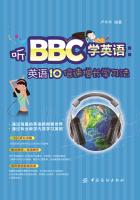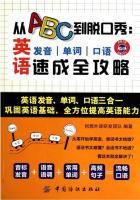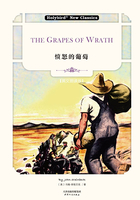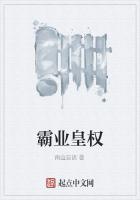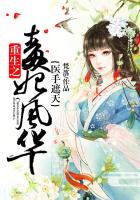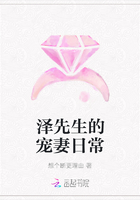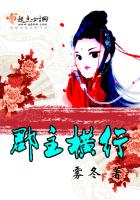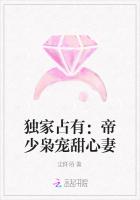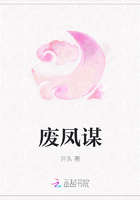In March,1974,the villagers from Xiyang Village of Yanzhai Township in Lintong District accidentally discovered many broken pottery figures while sinking a well 1.5 kilometers east of Emperor Qinshihuang's Mausoleum。After archaeological excavation and textual research it was found that this was an oblong pit in which were buried terra-cotta warriors and horses from the Qin Dynasty。In 1976,after drilling,another two pits were discovered respectively 20 meters and 25 meters north of the former one。They were numbered Pit 1,2 and 3 respectively in order of discovery,with a total area of 22,780 square meters。
This new discovery stirred up a sensation across the whole world。In order to protect those rare but valuable historical relics,in 1975,the State Council gave permission that a museum covering an area of 16,300 square meters be constructed on the site of Pit No。1.The museum was officially open to the public on October 1—National Day,1979.The exhibition hall of Pit No。3 was open to the public on September 27,1989 and that of Pit No。2 was also open to the public in October 1994.The museum and the mausoleum are listed as one of the ten scenic spots and historical sites in China and they are also placed by the UNESCO among the world's cultural heritage sites。
Pit No。1 is in an oblong shape,230 meters long from east to west,62 meters wide from north to south and 5 meters deep,covering an area of 14,260 square meters。It is an earth-and-wood structure in the shape of a tunnel。There are five sloping entrances on the eastern and western sides of the pit respectively。Down inside the tunnel,there are ten earth-rammed partition walls,across which huge and strong rafters were placed,then covered with mats and fine soil and filling earth。The floors are paved with brick。The terra-cotta warriors and horses in Pit No。1 are arrayed in a practical battle formation。In the long corridor to the east end of the pit stand facing east three rows of terra-cotta warriors in battle tunics and puttees,70 in each,totaling 210 altogether。Armed with bows and arrows,they constitute the vanguard。There is one row of warriors in the south,north and west of the corridor respectively,facing outward。They are probably the flanks and the rear guard。Holding crossbows and arrows and other long-distance shooting weapons,they took up the job of defending the whole battle formation。The ten rammed partition walls divide Pit No。1 into eleven latitudinal passage ways where stand facing east 38 columns of warriors with horse-drawn。
1974年3月,临潼区晏寨乡西扬村村民在秦始皇陵东1.5公里处打井时,意外地发现了许多碎陶人,经考古工作者探测,这是一个长方形的秦代兵马俑坑。1976年,通过钻探,在此坑的北侧20和25米处分别发现了两处兵马俑坑。按照它们发现的时间分别定名为兵马俑一、二、三号坑。三个坑的总面积为22,780平方米。
这一发现震惊中外,为了妥善保护这些罕见的具有重要历史价值的文物,1975年国务院批准在一号坑原址上建一座占地16,300平方米的博物馆,于1979年国庆节正式对外开放,兵马俑三号坑也于1989年9月27日正式向国内外观众展出。二号坑展厅已于1994年10月正式展出。秦始皇兵马俑博物馆被列为中国十大名胜之一,还被联合国教科文组织宣布为世界文化遗产。
一号坑平面呈长方形,东西长230米,宽62米,深5米,总面积14,260平方米,为坑道式土木建筑结构,东西两端各有斜坡门道5个,坑道内有10道2.5米宽的夯土隔墙,隔墙上架着粗大的横梁,再铺芦席、细泥和填土,底部以青砖墁铺。一号坑兵马俑按实战军阵排列。俑坑的东端是一个长廊,站着三排面向东的战袍武士俑,每排70件,共210件,手持弓弩,他们是一号坑的前锋部队。长廊南边有一排面向南的武士俑,是右翼,北边有一排面向北的武士俑,是左翼。两头有一列面向西的武士俑,是后卫。他们手执弓弩等远射兵器,担任整个军阵的警戒任务。在10道隔墙隔开的11个过洞里排列着38路面向东的纵队,每路中间都排列着驷马战车。陶俑全部身披铠甲,手执长兵器。他们是一号坑的主力部队。一号坑共有27个探方,根据每个探方里兵马俑排列的密度推算,全部发掘后可出土兵马俑6000余件,其中以步兵居多。
一号坑以东20米是二号坑,它是由4个单元内的4个不同兵种构成的一个曲尺形军阵,估计可出土陶俑1000多件,车马和鞍马近5000多匹,面积6000平方米。第一单元即俑坑东边突出的大斗子部分,是由334件弩兵俑组成的小方阵。第二单元即俑坑的南半部,包括1至8过洞,是由64乘驷马战车组成的方阵,每乘战车有军士俑3件。第三单元即俑坑的中部,包括9至11过洞,是由19乘战车和100余件随车徒手兵俑组成的方阵。第四单元即俑坑的北半部,包括12至14过洞,是由战车6乘、鞍马和骑兵俑各124件组成的骑兵阵。四个单元有机联系构成一个大阵,又可以分开组成四个独立的小阵,能攻能守,自我保护力强,反应快速。
三号坑在二号坑以西、一号坑以北25米的地方,平面呈凹字形,面积为520平方米,仅有4马1车和68个陶俑。它的东边是一条长11.2米,宽3.7米的斜坡门道,与门道相对应的为一车马房,车马房两侧各有一东西厢房,即南厢房和北厢房。共出土陶俑64件,这些陶俑的编组排列与一、二号坑不同。一、二号坑内的陶俑都是按作战队形排列,而三号坑内的武士俑则是环绕周壁,面内相向夹道式排列。三号坑内武士俑所持兵器也与一、二号坑内武士俑不同。后者配备的有长射程的弓弩,近距离格斗的矛、戈、钺、剑等,而三号坑内只发现了一种无刃兵器铜殳。铜殳在秦代是一种专门用于仪仗的兵器。
在北厢房内还发现有残鹿角一件,动物朽骨一堆。可能是专供战前占卜或祈战活动的场所。通观三号坑整个布局,它可能是整个地下军阵的指挥部——军幕。
mausoleum n。陵墓
excavation名词n。发掘;开凿的洞穴(或山路等);(发掘出来的)古迹;出土的文物
heritage n。遗产;继承物;传统
corridor n。走廊
infantrymen n。步兵
千古第一帝——秦始皇
秦始皇(公元前259年—公元前210年),中国历史上第一个大一统王朝——秦王朝的开国皇帝。姓嬴,名政,秦庄襄王之子。秦王政13岁时继王位,22岁亲政。自公元前230年至前221年,先后灭韩、赵、魏、楚、燕、齐六国,39岁时完成了统一中国大业,建立起一个以汉族为主体、多民族统一的中央集权的强大国家——秦朝,定都咸阳。公元前210年,秦始皇东巡途中驾崩于沙丘(今河北省邢台市)。秦始皇认为自己的功劳胜过之前的三皇五帝,将其尊号改为“皇帝”。秦始皇是中国历史上第一个使用“皇帝”称号的君主,被明代思想家李贽誉为“千古一帝”。



